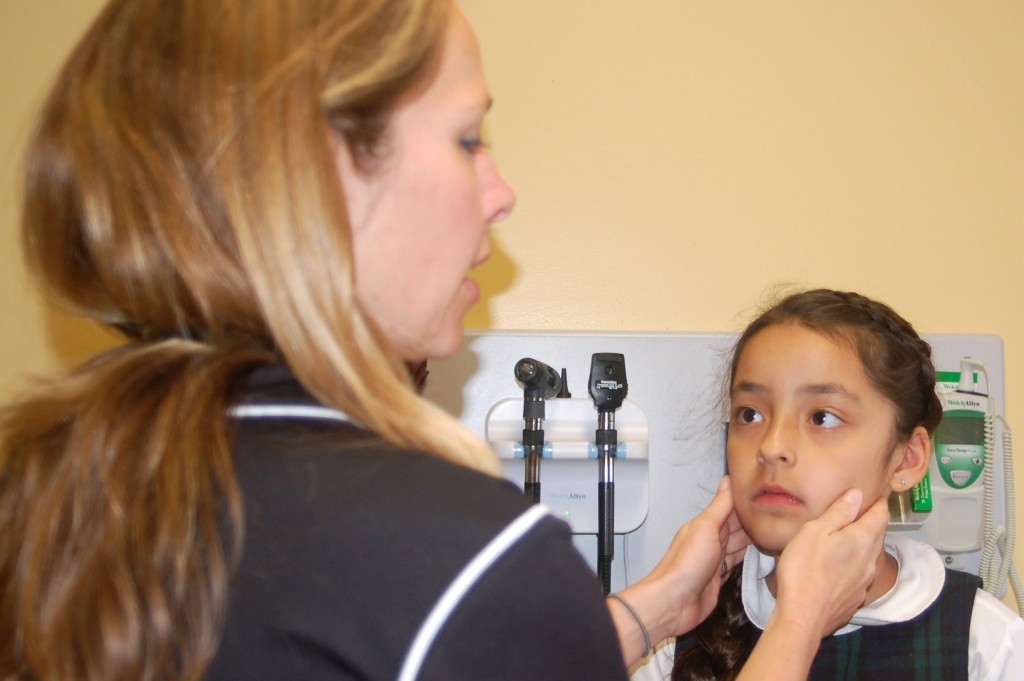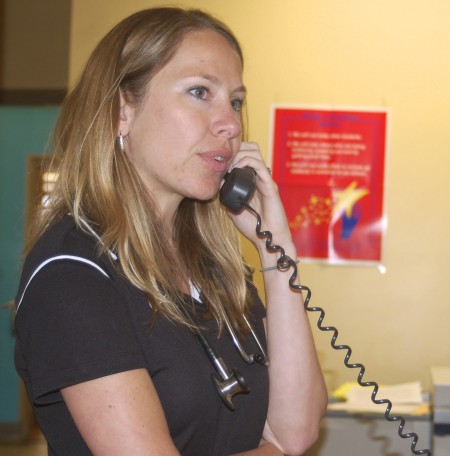School Health Clinic Serves 2,000 Students
St. Anthony, nation's largest K-12 grade school, has health clinic serving up to 30 students a day.
In the belly of St. Anthony School’s administrative building are several rooms outfitted as a doctor’s office. A narrow waiting room, its walls decorated with a smiling sun and various animals, houses a receptionist’s desk and toys for young children. Periodic waves of students from each of the school’s five campuses flow in and out.
Padre Pio Clinic, located at 1727 S. 9th St., focuses almost exclusively on the 2,000 students at St. Anthony School, the largest K-12 Catholic school in the country. The clinic is a nonprofit organization and bills Medicaid for the services it provides.
“(Padre Pio Clinic) makes health care convenient for children as well as for their families,” said UnitedHealthcare CEO Pamela Stahl. “I think that’s so important. For any of us, going to the doctor can be an intimidating thing … but because (the clinic has) … the partnership with the school, they make it very easy for the children to get the care that they need.”
UnitedHealthcare recently recognized the non-profit’s efforts with a $15,000 grant.
About four years ago, Dana Rodriguez, now director of the clinic, learned that the school of nearly 1,500 students did not have a school nurse. Her plan to fill that vacancy quickly turned into an effort to address the students’ greater health care needs by creating the school-based clinic.
“We try to support them in any physical or mental needs that (the students) have,” Rodriguez said.
Padre Pio started small – the staff carried what little equipment they had from campus to campus throughout the school day. In 2012, a grant from the U.S. Department of Health and Human Services funded renovation of the basement of the administrative building into examination rooms. The grant also allowed the school to purchase medical equipment.
According to Rodriguez, the clinic sees up to 30 students a day in cold and flu season. Padre Pio also provides students with vaccinations, sports and general physical examinations, vision and dental screenings, mental health care, help with weight management and many other services. Each of the school’s campuses has a satellite clinic, which allows healthcare providers to change sites without having to carry equipment with them.
Students are able to return to class after a clinic visit, rather than having parents and students take a day off to go see a doctor elsewhere. Some even have the clinic listed as their primary care provider, though most use it as a supplement to a doctor in the community.
“It’s very important to be able to provide these services in such an area of great need,” said Laura Gutierrez, vice president of academic affairs, referring to the school’s high poverty rate. “To be able to provide those clinics here in (the students’) own backyard at no cost is really beneficial because then it really does nurture the entire child.”
Martha Tellez’s two children have taken advantage of the clinic’s resources, from getting medicine for a headache to the weight management services. Tellez explained that the clinic provides her and other parents with peace of mind that their children are in good hands.
Rodriguez said she has been improving her Spanish since she came to the school. Along with structuring the clinic with the majority-Hispanic population in mind, she and her co-workers provide for students of diverse ages (grades K-12), as well as with various financial situations and attitudes toward health care. One of the clinic’s goals is to encourage a good attitude toward preventative care and to make the doctor’s office a comfortable place.
“Sometimes (the students) know exactly the questions we’ll ask because they’re so used to talking with us,” Rodriguez said. “We’re encouraging them to be active, we talk to them about what they’re doing, we give them suggestions and they feel comfortable with us. … I think just having a health presence in the school is really important.”
This story was originally published by Milwaukee Neighborhood News Service, where you can find other stories reporting on fifteen city neighborhoods in Milwaukee.





















